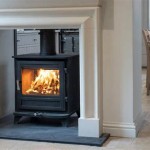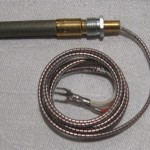Understanding Self-Contained Gas Fireplaces
Self-contained gas fireplaces are a popular heating and aesthetic solution for many homes and commercial spaces. These units offer the visual appeal and warmth of a traditional fireplace without the need for extensive venting systems or a chimney. They operate using either natural gas or propane and are designed for easy installation and operation. This article provides a detailed overview of self-contained gas fireplaces, including their components, advantages, disadvantages, installation considerations, maintenance, and safety precautions.
A self-contained gas fireplace differs from traditional gas fireplaces primarily in its venting requirements. Traditional gas fireplaces usually need a dedicated chimney or flue system to exhaust combustion byproducts. Self-contained models, on the other hand, utilize direct vent or vent-free technology. Direct vent fireplaces draw combustion air from outside the building and vent exhaust gases directly outside through a co-axial pipe. Vent-free fireplaces, while not requiring any venting mechanism, rely on sophisticated oxygen depletion sensors (ODS) to shut off the gas supply if oxygen levels in the room become dangerously low. The choice between direct vent and vent-free options often depends on building codes, personal preferences, and specific installation parameters.
The construction of a self-contained gas fireplace typically involves a firebox, a burner assembly, a gas control valve, a venting system (for direct vent models), and decorative elements such as ceramic logs or glass media. The firebox encases the fire and is generally made of steel or cast iron. The burner assembly mixes gas and air for combustion, producing the flame. The gas control valve regulates the gas supply to the burner, and it plays a vital role in safety by shutting off the gas in case of malfunctions. The decorative elements are strategically placed to mimic the aesthetics of a traditional wood-burning fireplace.
Key Components and Functioning
A deep dive into the individual components reveals the intricacies of self-contained gas fireplaces. The burner assembly is the heart of the unit, responsible for generating the flame. Burners are designed in various configurations, influencing the flame pattern and heat output. They are typically constructed from stainless steel or cast iron to withstand high temperatures and corrosion. Some models include modulating burners that adjust the flame height and heat output based on thermostat settings.
The gas control valve is a multi-faceted device that regulates the flow of gas to the burner. It incorporates safety features such as a thermocouple or thermopile, which generates a small electrical current when the pilot light is lit. This current keeps the main gas valve open. If the pilot light goes out, the current ceases, and the main gas valve closes, preventing gas from leaking into the room. Electronic ignition systems are also common, replacing the traditional pilot light with an electronic spark to ignite the gas.
For direct vent models, the venting system consists of a co-axial pipe. The inner pipe expels exhaust gases outside, while the outer pipe draws fresh air into the combustion chamber. This design ensures that the fireplace operates independently of the indoor air supply and prevents the backdrafting of exhaust gases into the home. The venting system must be installed according to the manufacturer's specifications to ensure safe and efficient operation.
The decorative elements, such as ceramic logs or glass media, contribute significantly to the aesthetic appeal of the fireplace. Ceramic logs are designed to resemble natural wood and are often crafted with realistic details such as bark texture and simulated char marks. Glass media offers a contemporary alternative, creating a modern and visually stunning flame display. The choice of decorative elements depends on personal preferences and the overall style of the room.
Advantages and Disadvantages
Self-contained gas fireplaces offer several advantages over traditional wood-burning fireplaces and other heating solutions. One of the primary benefits is convenience. They are easy to operate, requiring only the flip of a switch or the press of a button to ignite the flame. There is no need to chop wood, build a fire, or clean up ashes. Gas fireplaces also provide consistent and controllable heat, allowing users to adjust the temperature to their desired comfort level. They are also more energy-efficient than traditional wood-burning fireplaces, as they lose less heat through the chimney.
Another advantage is their versatility in installation. Self-contained gas fireplaces can be installed in various locations within a home, even in rooms without existing chimneys. Direct vent models offer flexibility in venting, as the co-axial pipe can be routed horizontally through a wall or vertically through the roof. Vent-free models can be placed against any wall, provided they meet specific clearance requirements. This makes them an attractive option for renovations or new construction projects.
Despite their advantages, self-contained gas fireplaces also have some disadvantages worth considering. One potential drawback is the cost of installation. While the units themselves may be relatively affordable, the cost of professional installation, including gas line connections and venting systems, can add up. Furthermore, gas fireplaces require a continuous supply of natural gas or propane, which can incur ongoing fuel costs. Vent-free models, while eliminating the need for venting, may raise concerns about indoor air quality due to the release of combustion byproducts. It's crucial to ensure proper ventilation and maintain the oxygen depletion sensor to prevent potential safety hazards.
Another disadvantage is that gas fireplaces do not provide the same ambiance as a real wood-burning fire. While ceramic logs and glass media can mimic the appearance of a wood fire, they do not replicate the crackling sound, the smoky smell, or the radiant heat. This may be a significant consideration for those who value the sensory experience of a traditional fireplace.
Installation, Maintenance, and Safety Considerations
The proper installation of a self-contained gas fireplace is critical for safe and efficient operation. It is highly recommended to hire a qualified and licensed professional to handle the installation process. The installer will ensure that the gas line is properly connected, the venting system is correctly installed (for direct vent models), and the unit meets all applicable building codes and safety regulations. Improper installation can lead to gas leaks, carbon monoxide poisoning, or fire hazards.
Regular maintenance is essential to keep a self-contained gas fireplace in good working condition. This includes cleaning the burner assembly, inspecting the venting system, and checking the gas connections for leaks. The burner assembly should be cleaned annually to remove dust, debris, and carbon deposits that can affect the flame pattern and heat output. The venting system should be inspected for obstructions or damage that could impede the flow of exhaust gases. Gas connections should be checked for leaks using a soapy water solution, and any leaks should be repaired immediately.
Safety is paramount when operating a self-contained gas fireplace. It is crucial to install carbon monoxide detectors in the home and test them regularly. Carbon monoxide is a colorless and odorless gas that can be deadly if inhaled. Ensure that the fireplace is properly vented and that the oxygen depletion sensor (for vent-free models) is functioning correctly. Never block or obstruct the venting system, and avoid storing flammable materials near the fireplace. Finally, always follow the manufacturer's instructions for operation and maintenance.
Furthermore, familiarize yourself with the operation of the gas control valve and know how to shut off the gas supply in case of emergency. Keep the area around the fireplace clear of obstructions, especially combustible materials such as curtains, furniture, and paper. If you notice any unusual odors or sounds coming from the fireplace, turn off the gas supply immediately and contact a qualified technician for inspection and repair. With proper installation, maintenance, and safety precautions, a self-contained gas fireplace can provide years of reliable warmth and enjoyment.
Selecting the appropriate self-contained gas fireplace requires careful consideration of several factors. Room size is a primary determinant, as the fireplace's BTU (British Thermal Unit) output should match the heating requirements of the space. A fireplace that is too powerful may overheat the room, while one that is underpowered may not provide adequate warmth. Building codes and regulations also play a crucial role in selecting the appropriate type. Some jurisdictions may restrict the use of vent-free models or impose specific requirements for venting systems. Energy efficiency ratings, such as the AFUE (Annual Fuel Utilization Efficiency), can help homeowners compare the efficiency of different models and choose one that minimizes fuel consumption. Finally, aesthetic preferences should be considered, as the fireplace should complement the overall style of the room.
The lifespan of a well-maintained self-contained gas fireplace can extend for many years. However, certain components may require replacement over time. The burner assembly, gas control valve, and venting system are all subject to wear and tear and may need to be replaced periodically. Regular inspections and maintenance can help identify potential problems early and prevent costly repairs. It is advisable to keep records of maintenance and repairs to track the performance of the fireplace and identify any recurring issues. By following these guidelines, homeowners can enjoy the warmth and ambiance of a self-contained gas fireplace for years to come.

Ventless Gas Fireplace Propane

50 Free Standing Ventless Gas Fireplace Visualhunt

50 Free Standing Ventless Gas Fireplace Visualhunt
:max_bytes(150000):strip_icc()/ventless-gas-fireplaces-4160746-hero-f9d4bdcd9bd446eb84406de306f790ba.jpg?strip=all)
How To Pick Out A Ventless Gas Fireplace

Self Contained Sustainable Fireplace Technology

50 Free Standing Ventless Gas Fireplace Visualhunt

Enclosed Gas Fireplaces Jetmaster
All About Gas Fireplaces Ontario Home Builders

50 Free Standing Ventless Gas Fireplace Visualhunt
Dru Freestanding Gas Fires And Stoves
Related Posts








